Experimental Analysis of Critical Current and Alternating Current Losses of High-Temperature Superconductor Tape with Resin and Gallium-Indium-Tin
Abstract
1. Introduction
2. Experimental Setup
3. Results and Discussion
3.1. Critical Current
3.2. AC loss
4. Conclusions
Author Contributions
Conflicts of Interest
References
- Evans, D.; Morgan, J.; Stapleton, G. Epoxy Resins for Superconducting Magnet Encapsulation; RHEL/R 251; Rutherford High Energy Lab: Chilton, UK, 1972. [Google Scholar]
- Zhang, M.; Chudy, M.; Wang, W.; Chen, Y.; Huang, Z.; Zhong, Z. AC loss estimation of HTS armature windings for electric machines. Appl. Supercond. IEEE Trans. 2013, 23, 5900604. [Google Scholar] [CrossRef]
- Wilson, M.N.; Wilson, M. Superconducting Magnets; Clarendon Press Oxford: Oxford, UK, 1983; Volume 198. [Google Scholar]
- Barth, C.; Bagrets, N.; Weiss, K.; Bayer, C.; Bast, T. Degradation free epoxy impregnation of REBCO coils and cables. Supercond. Sci. Technol. 2013, 26, 055007. [Google Scholar] [CrossRef]
- Takematsu, T.; Hu, R.; Takao, T.; Yanagisawa, Y.; Nakagome, H.; Uglietti, D. Degradation of the performance of a YBCO-coated conductor double pancake coil due to epoxy impregnation. Phys. C Supercond. 2010, 470, 674–677. [Google Scholar] [CrossRef]
- Yanagisawa, Y.; Sato, K.; Piao, R.; Nakagome, H.; Takematsu, T.; Takao, T. Removal of degradation of the performance of an epoxy impregnated YBCO-coated conductor double pancake coil by using a polyimide-electrodeposited YBCO-coated conductor. Phys. C Supercond. 2012, 476, 19–22. [Google Scholar] [CrossRef]
- Song, H.; Brownsey, P.; Zhang, Y.; Waterman, J.; Fukushima, T.; Hazelton, D. 2G HTS coil technology development at SuperPower. Appl. Supercond. IEEE Trans. 2013, 23, 4600806. [Google Scholar] [CrossRef]
- Zhang, M.; Wang, W.; Huang, Z.; Baghdadi, M.; Yuan, W.; Kvitkovic, J. AC Loss Measurements for 2G HTS Racetrack Coils With Heat-Shrink Tube Insulation. Appl. Supercond. IEEE Trans. 2014, 24. [Google Scholar] [CrossRef]
- SuperPower Inc. Official Website. Available online: http://www.superpower-inc.com/ (accessed on 26 February 2018).
- SuperOx Company, Official Website. Available online: http://www.superox.ru/ (accessed on 26 February 2018).
- Ma, K.; Liu, J. Liquid metal cooling in thermal management of computer chips. Front. Energy Power Eng. China 2007, 1, 384–402. [Google Scholar] [CrossRef]
- Zhu, J.; Zhang, Z.; Zhang, H.; Zhang, M.; Qiu, M.; Yuan, W. Electric Measurement of the Critical Current, AC Loss, and Current Distribution of a Prototype HTS Cable. Appl. Supercond. IEEE Trans. 2014, 24, 1–4. [Google Scholar] [CrossRef]
- Yuan, W.; Ainslie, M.; Xian, W.; Hong, Z.; Chen, Y.; Yan, Y. Theoretical and experimental studies on Jc and AC losses of 2G HTS coils. Appl. Supercond. IEEE Trans. 2011, 21, 2441. [Google Scholar] [CrossRef]
- Ventura, G.; Perfetti, M. Thermal Properties of Solids at Room and Cryogenic Temperatures; Springer: Berlin, Germany, 2014. [Google Scholar]
- Morley, N.; Burris, J.; Cadwallader, L.; Nornberg, M. GaInSn usage in the research laboratory. Rev. Sci. Instrum. 2008, 79, 056107. [Google Scholar] [CrossRef] [PubMed]
- Solano, B.P. Cryogenic Silicon Microstrip detector modules for LHC; Universitat Politècnica de Catalunya: Catalonia, Spain, 2004. [Google Scholar]
- Norris, W. Calculation of hysteresis losses in hard superconductors carrying ac: Isolated conductors and edges of thin sheets. J. Phys. D Appl. Phys. 1970, 3, 489. [Google Scholar] [CrossRef]

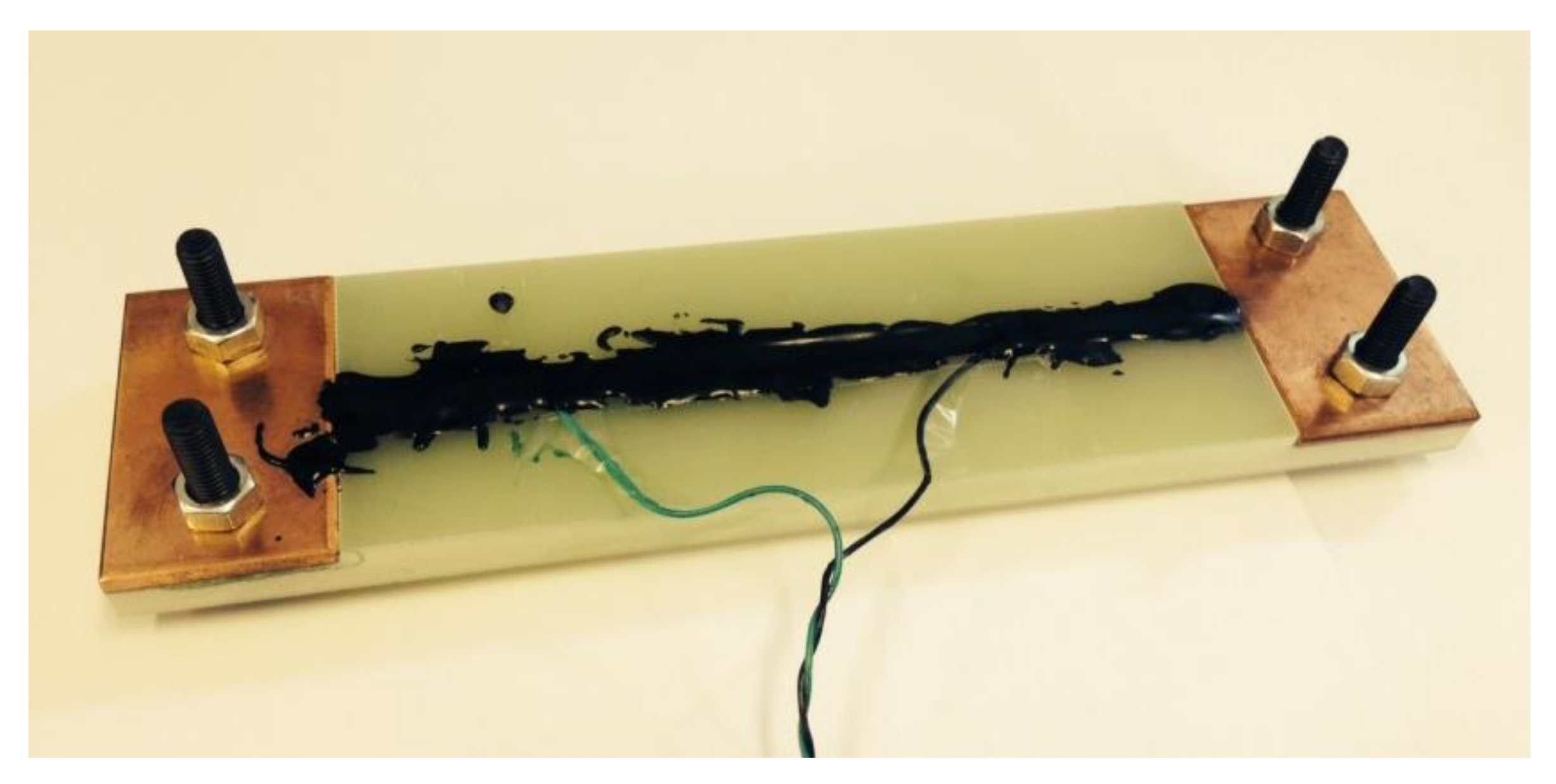
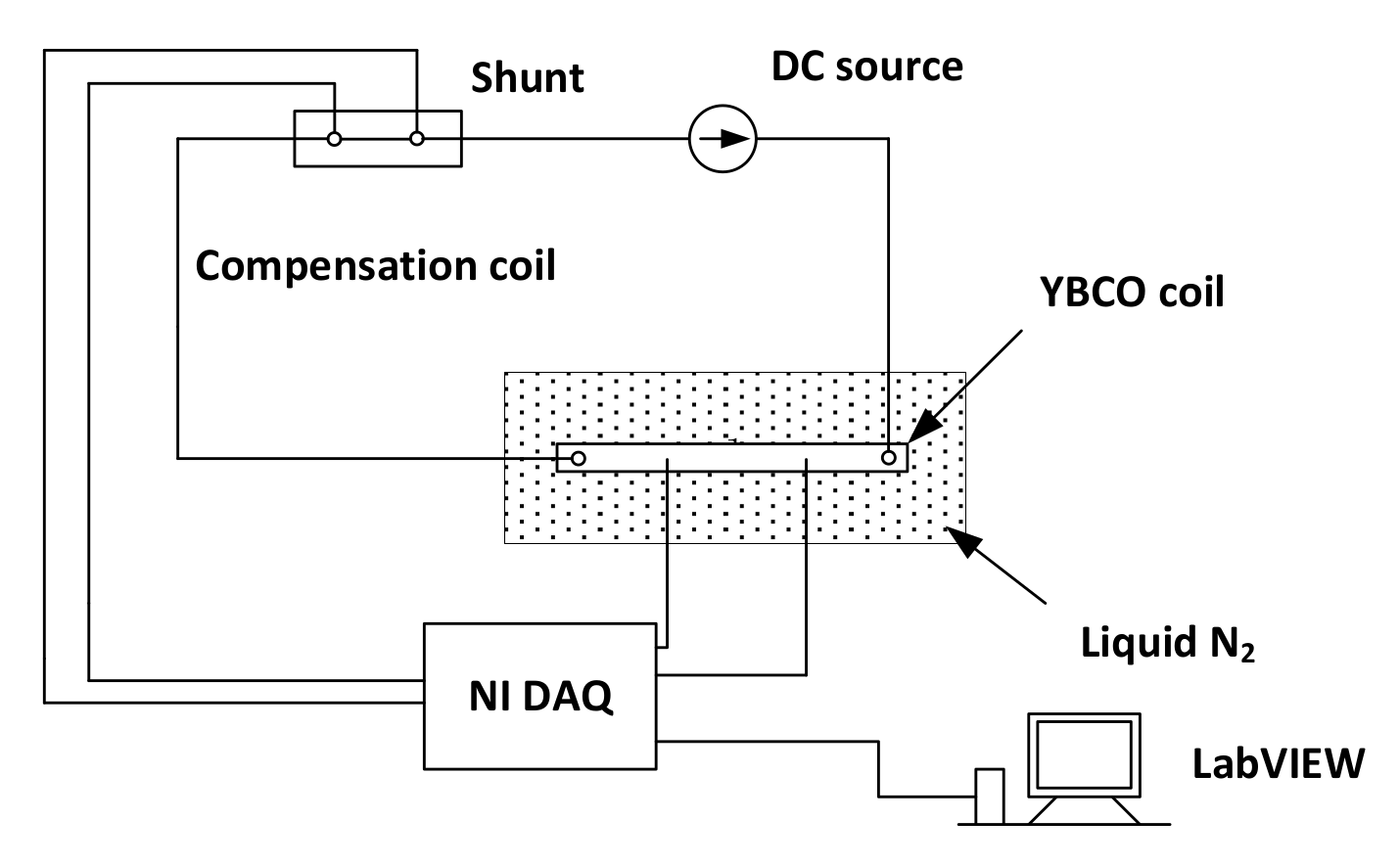
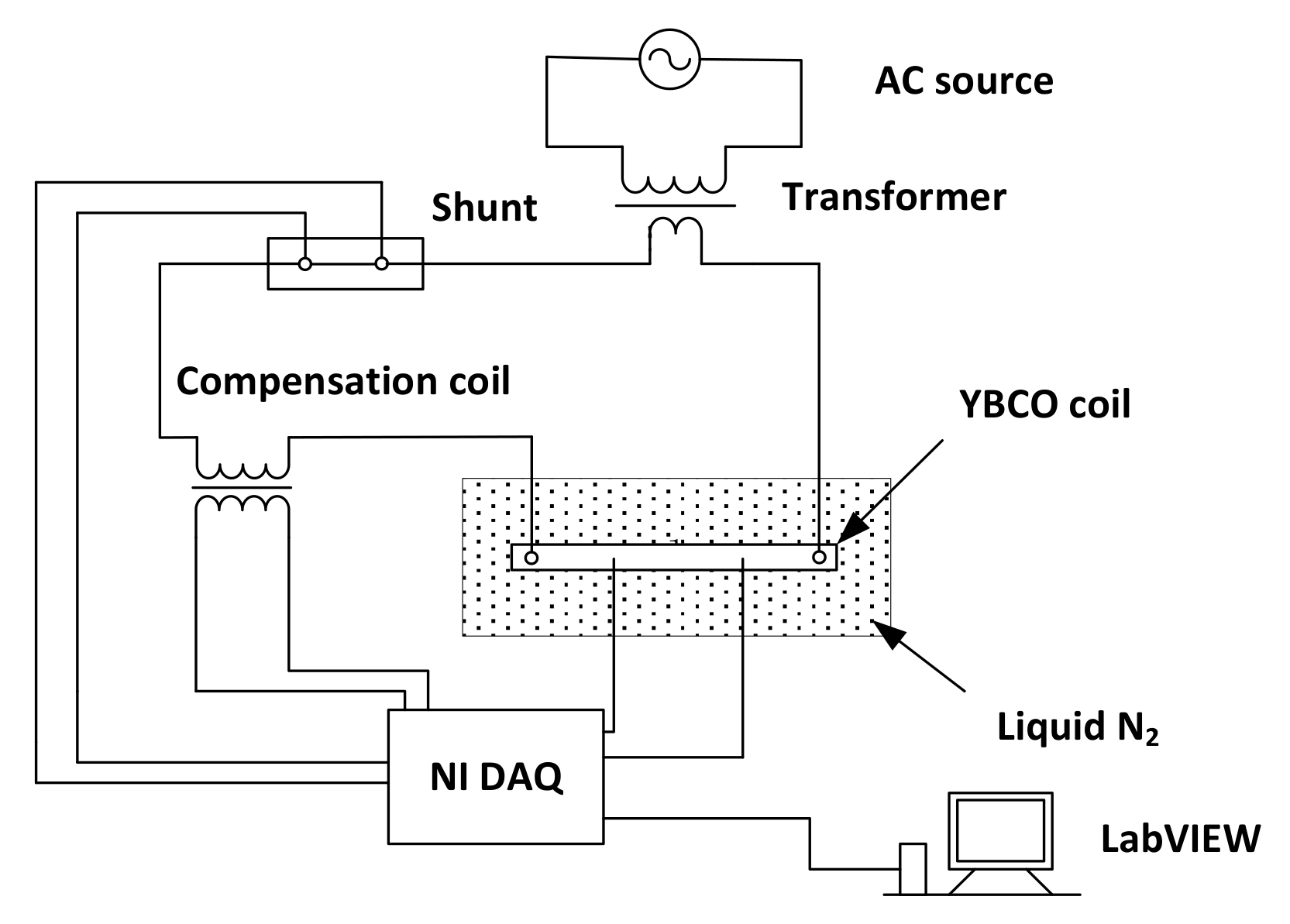
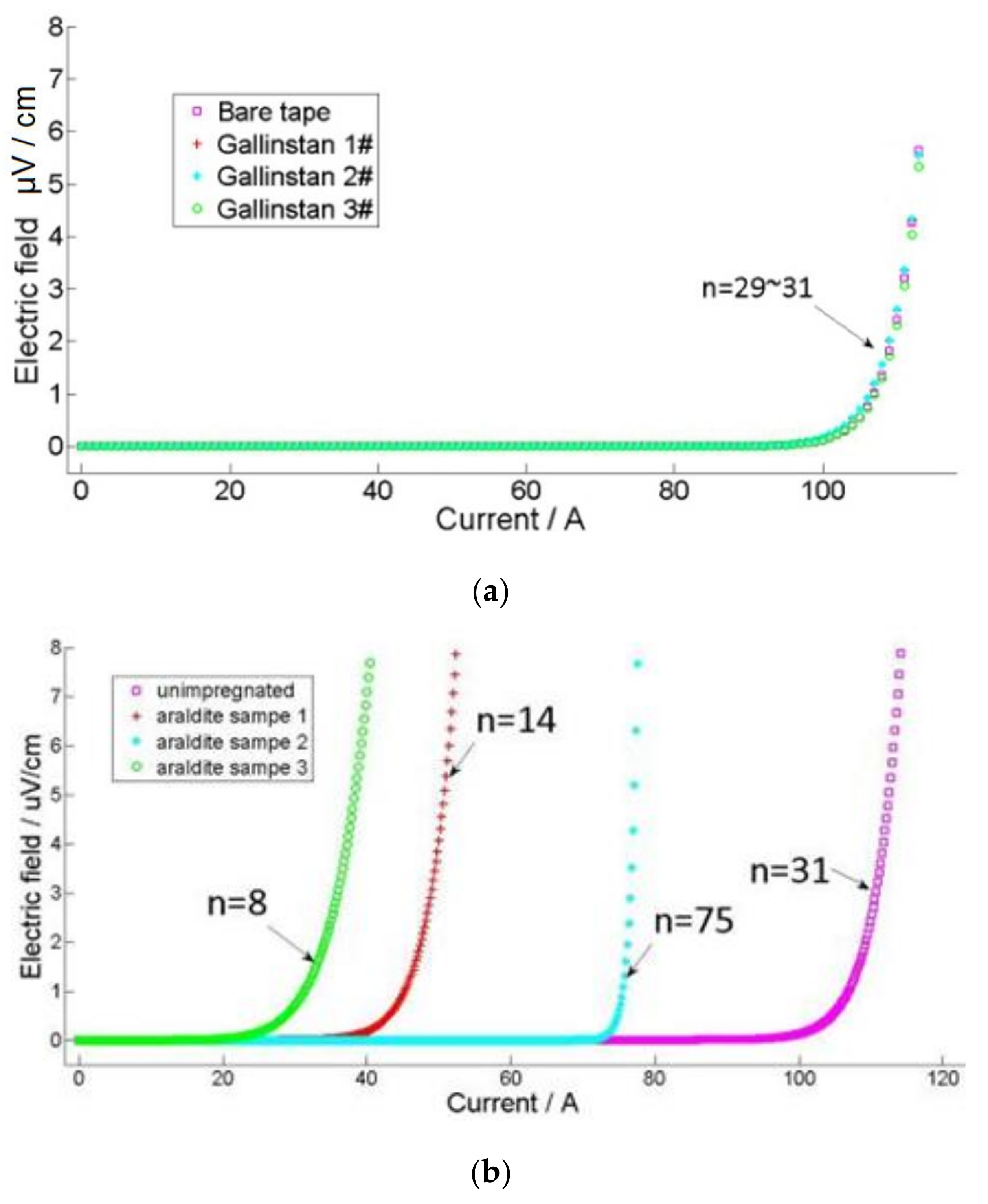
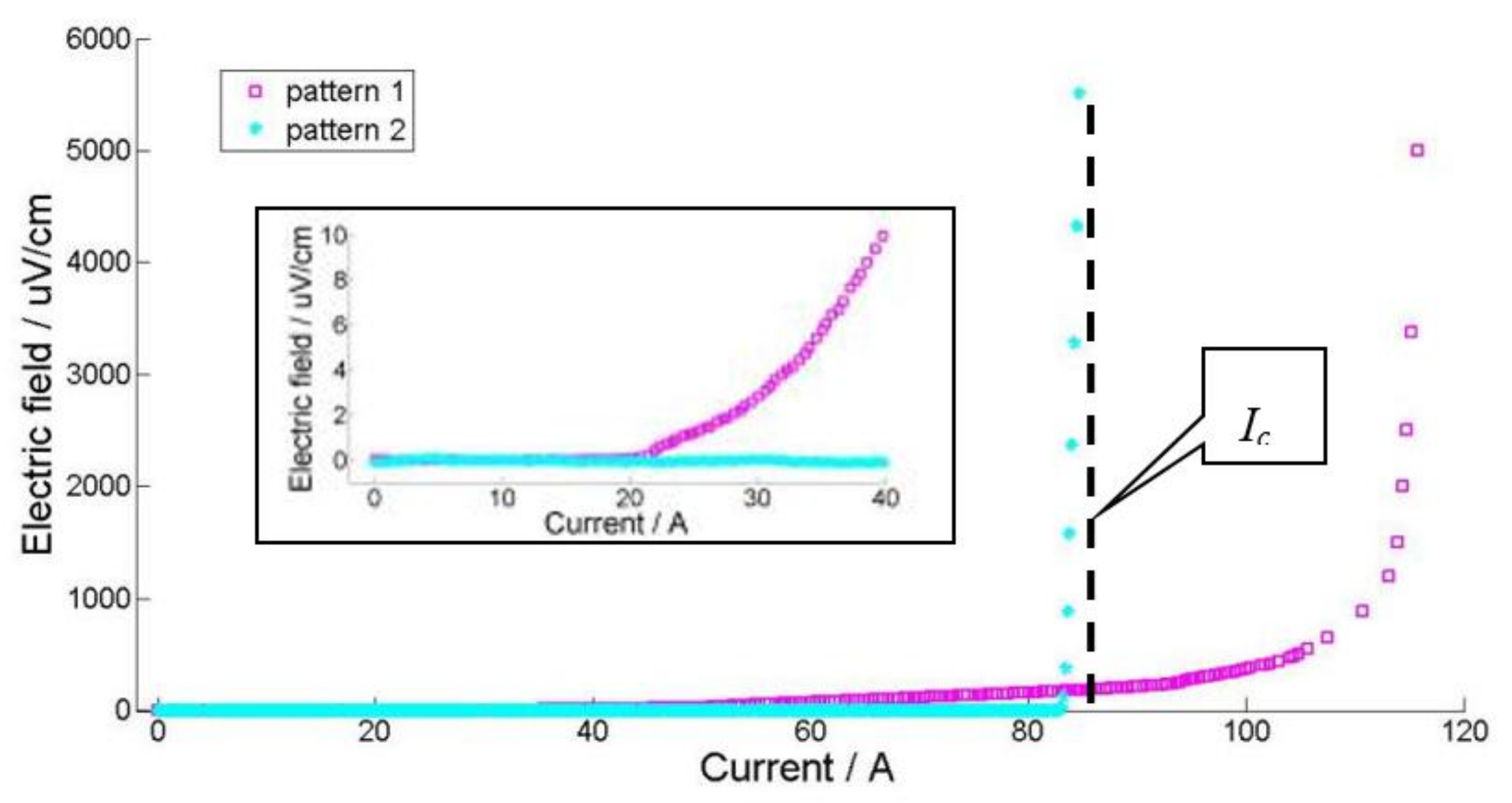


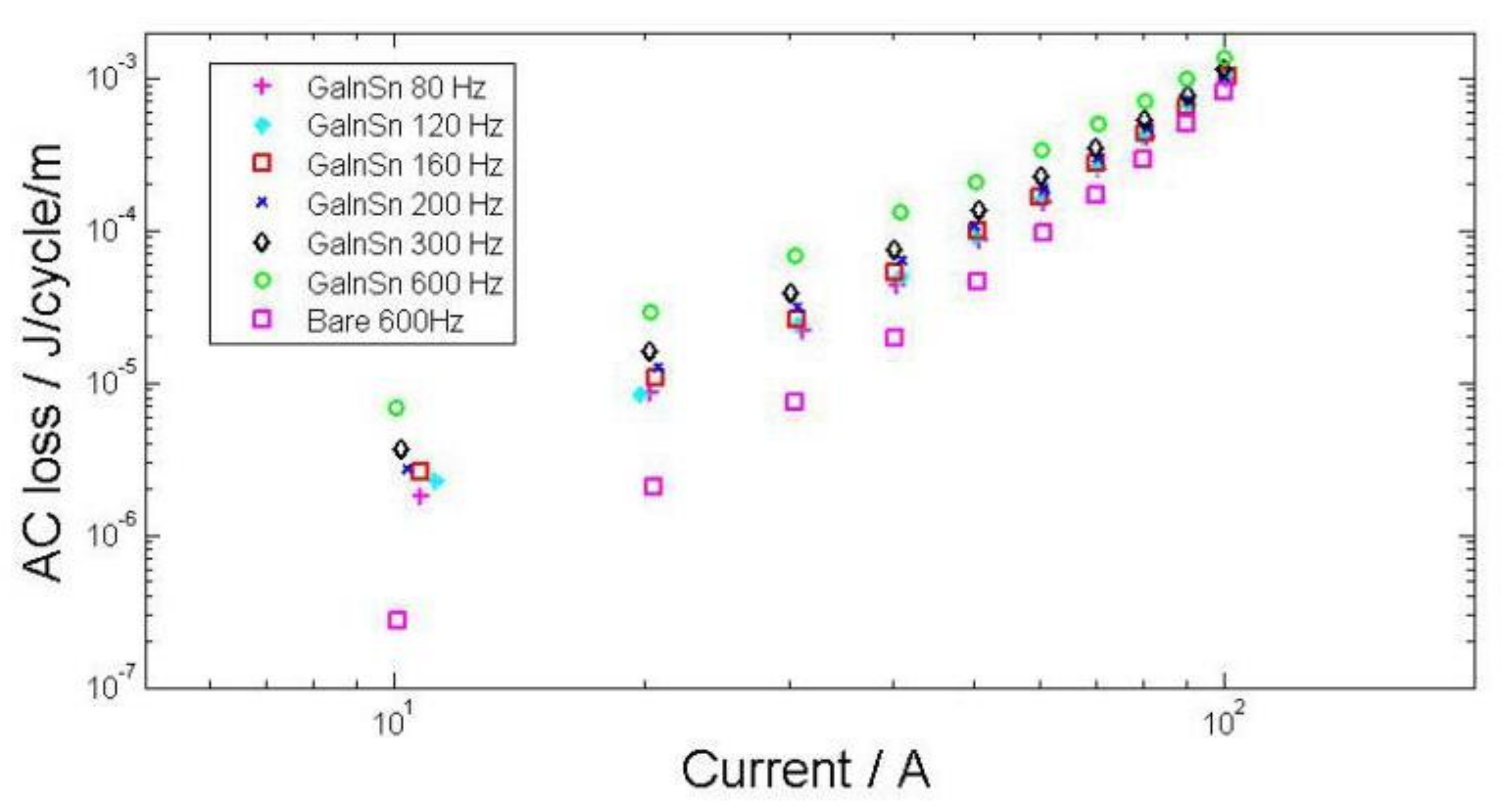
| Resin Component | Ratio in Weight | Cure Condition | |
|---|---|---|---|
| Araldite | Araldite DBF | 100 | 48 h, 25 °C |
| Hardener HY951 | 10 | ||
| Material | Gallinstan | Araldite | ||
|---|---|---|---|---|
| Ic | n | Ic | n | |
| Sample 1 | 106.2 | 29 | 45 | 14 |
| Sample 2 | 106.7 | 31 | 80 | 75 |
| Sample 3 | 106.4 | 31 | 32 | 8 |
© 2018 by the authors. Licensee MDPI, Basel, Switzerland. This article is an open access article distributed under the terms and conditions of the Creative Commons Attribution (CC BY) license (http://creativecommons.org/licenses/by/4.0/).
Share and Cite
Yu, D.; Sun, Y.; Zhang, H.; Meng, Y.; Liu, H. Experimental Analysis of Critical Current and Alternating Current Losses of High-Temperature Superconductor Tape with Resin and Gallium-Indium-Tin. Materials 2018, 11, 573. https://doi.org/10.3390/ma11040573
Yu D, Sun Y, Zhang H, Meng Y, Liu H. Experimental Analysis of Critical Current and Alternating Current Losses of High-Temperature Superconductor Tape with Resin and Gallium-Indium-Tin. Materials. 2018; 11(4):573. https://doi.org/10.3390/ma11040573
Chicago/Turabian StyleYu, Dongmin, Yajie Sun, Huiming Zhang, Yuanzhu Meng, and Huanan Liu. 2018. "Experimental Analysis of Critical Current and Alternating Current Losses of High-Temperature Superconductor Tape with Resin and Gallium-Indium-Tin" Materials 11, no. 4: 573. https://doi.org/10.3390/ma11040573
APA StyleYu, D., Sun, Y., Zhang, H., Meng, Y., & Liu, H. (2018). Experimental Analysis of Critical Current and Alternating Current Losses of High-Temperature Superconductor Tape with Resin and Gallium-Indium-Tin. Materials, 11(4), 573. https://doi.org/10.3390/ma11040573





